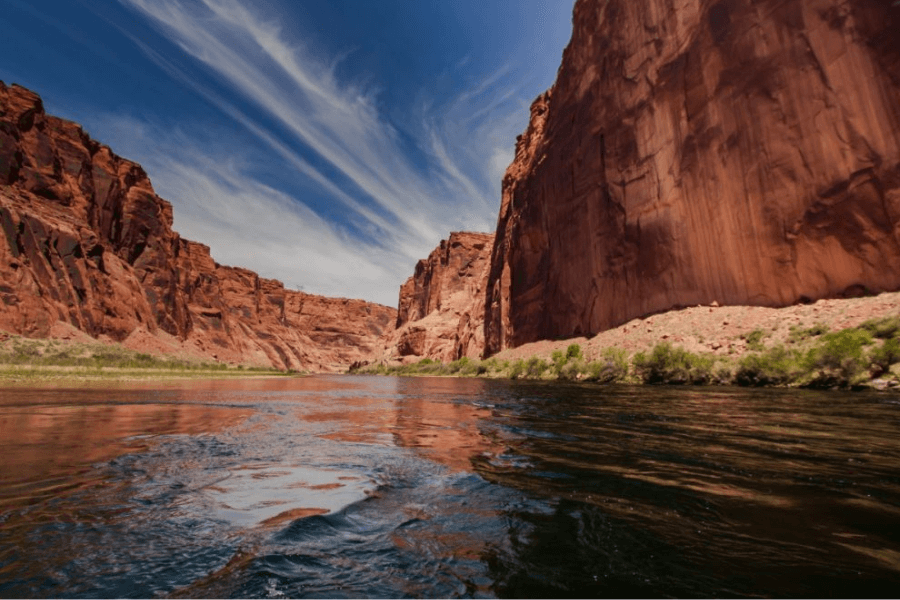The Colorado River Is Drying Up Faster Than Expected: How Will Farming Be Impacted

Approximately 40 million Americans rely on a single river to provide them with their water needs. That river is the Colorado River, and it‘s in a dire situation right now that puts access to water for 10’s of millions very much at risk. A recent quote from a senior water program manager for the Environmental Defense Fund laid out exactly how dire things really are right now:
"We really don't have a choice to fail on this," said Christopher Kuzdas, a senior water program manager with the Environmental Defense Fund. "We've got to come together and find a way to manage and govern the system differently under climate change or there's going to be catastrophic consequences for the Southwest, and I'm not overstating that."
He is doing everything in his power to alert the public that there is a major disaster unfolding. But more importantly, calls for unity and innovation from senior water officials like Kuzdas open the door for us all to imagine new ways to manage our precious water resources and stave off the worst impacts of this looming disaster. The consequences for failing to do anything are too costly.
How Much Has the Colorado River Dried Up?
Some people look at stories like this and ask themselves what the big deal is - that warm weather and drought are part of the natural cycle of the seasons. While there is no clear trend indicating that precipitation is steadily declining, climatologists now understand that annual precipitation is more variable and less dependable than ever before. That means droughts are likely to be more intense and to last longer than in the past. Things have become far more extreme as of late, and it is putting many people on edge about what the future of the Colorado River will truly look like.
To put it in perspective, consider the following facts:
- In the year 2000, Lakes Mead and Powell (the two reservoirs along the Colorado) were 95% full
- At the end of this year, it is expected that those reservoirs will be just 27% full
- The water levels are 45 feet lower than they were even two years ago
The data points to a Colorado River that could dry up to an extent that makes it impossible to draw water, generate power or irrigate crops. If that happens, 40M American’s could face water scarcity, creating a cascade of effects that are very disruptive to many states and even the entire country’s food security.
Impacts on Farming
There is little doubt that a declining Colorado River will soon mean major changes to farming practices. The Bureau of Reclamation has asked the seven states that rely on the Colorado River to reduce their consumption by a total of 2 to 4 million acre feet of water over the next year. That is enough water to cover the entire state of Connecticut in a full foot of water with nearly enough left to go ahead and cover Rhode Island in the same amount. In short, these are dramatic cuts that are being called for.
Not Enough Water to Go Around
Agriculture of all kinds is a major consumer of water all around the world. In fact, it is estimated that about 70% of all water consumption worldwide is done by the agricultural industry.
However, the demand for irrigation water is difficult to curtail. Our farmers need it to produce our food and in a world where the population could reach 10B by 2050, demand for food is on the rise. If we want food security, we must provide water security for farmers, so our best opportunity is to invest in irrigation technology and innovations to help farmers maximize their efficiency.
Shortages Could Compound
The country is already experiencing a massive number of shortages, and it seems reasonable to think that this may continue as rivers dry up and it becomes more challenging to produce crops. Economic reports show that food prices have been soaring and that is not expected to ease off anytime soon. Finding ways to support our farmers irrigation needs so they can continue to meet growing food demand in an increasingly uncertain world must be a priority at the state and federal level.
New Irrigation Methods are a Must
There is no getting around the fact that smarter irrigation systems are a must. Giving farmers more affordable, smarter and more precise irrigation systems will help them optimize their water use to provide the country’s food security.
Reducing water use requires new technologies and new strategies, but it can be done. Since the entire planet has a stake in the production of food, it is important that we create a shared sense of urgency around this problem and start working together towards a solution. To learn more about Lumo’s irrigation technology, contact us here or email us at [email protected]